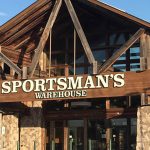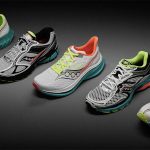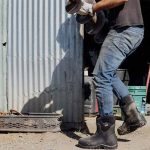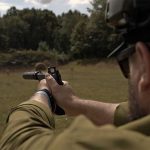Thanks to good conditions in the Northeast, Midwest and Colorado, snow sports retail sales are likely to approach if not surpass last winter, executives of the nation's most prominent snow sport retailing organizations told The B.O.S.S. Report in recent weeks.
- Strong November and January more than offset weak December and February sales
- Cold, snowy weather in more populous eastern half of country drives strong softgoods sales
- Sorel and Uggs boots emerge as big winners
- Western drought clips sales of backcountry ski and snowboard gear
“Skier days are probably about the same as last year, although overall spending is up and inventories are in good shape,” said Wilbur Rice, chairman of the National Ski & Snowboard Retailers Association in January, which represents about 400 independently owned specialty snow sports dealers.
Tom Gately, president of the buying group Snowsports Merchandising Corp., estimated September through February sales among the 60 retailers he serves are up modestly compared with a year ago. Strong sales in November and January more than offset year-over-year declines in December and February.
“They are at least as lean as they were last year,” Gately said of SMC's members, 80 percent of which operate locations in the eastern half of the United States. “We are predicting preseason business will be relatively flat again.”
In Golden, CO, Sports Specialists Ltd. President and CEO Steve Rogers agreed it was shaping up as a good season overall, but only because some region's are having an “exceptional year,” while others are having “a very tough time.” SSL buys for about 140 stores in Washington D.C. and 26 states, including many in the western United States.
“It's been a very good boot year for our guys,” said Rogers. “It's really hard to buy boots online. That's where specialty still has a competitive edge.”
Rogers described winter equipment inventories at SMC retailers as “okay,” but added he has little to no insight into what's occurring at full-line and on-line sporting goods retailers. Both he and Gately said that inventory trading among their retail members was brisk this year as retailers in the West sold slowing moving stock to their counterparts in the East.
“New England, the Midwest, the Mid-Atlantic and Rockies have done well,” he said. “The whole Rocky region is set up to go through Easter and Easter is early this year, which helps. Business has been real strong where the weather cooperated.”
One bright spot for retailers has been the junior's lease business, which continues to grow faster than overall retail sales.
“That is really good sign for our industry,” said Gately. “It works by getting the whole family involved and we will be putting more of our marketing efforts against it.”
Further to the west and Northwest, the outlook is dreary.
In British Columbia, Whistler-Blackcomb had to use lifts to transport skiers to the bottom of the mountain because of the lack of snow at lower elevations. The snowpack throughout the Cascades was running 50 percent below average through most of February. In Washington, some resorts remained closed throughout January and February. Drought conditions persisted in the Sierra Nevada through much of the season and the snowpack was below average across much of Utah's Wasatch Range.
“It's probably the worst I've seen it,” said David Polivy, co-owner of Tahoe Mountain Sports, which sells through a location in as well as online. “This is now year four of the drought in California and it's really starting to take a toll. Regionally, it's been incredibly difficult to sell stuff, particularly at a margin that keeps you in business.”
Backcountry ski and snowboard gear has been hit particularly hard due to dry weather in Washington, Oregon, Utah and even Colorado in recent weeks.
Tahoe Mountain Sport has managed to increase its sales modestly over last year by bidding aggressively for Google AdWords in markets with cold weather.
“The online business really, really, really helped us in January and February,” he said. “Eighty percent of online orders definitely going to the East Coast from boots like Sorels and Uggs to goggles and gloves.”
With 90 percent of its orders for next winter complete, Tahoe Mountain Sports in on pace to cut pre-season orders for hardgoods by half.
“It's really hard to write orders for next season right now,” Polivy said. “It's somewhat related to carryover, but it's also related to reducing risk. I'm also pushing back some spring deliveries and balancing vendor partnerships to those who are year round versus. those who are seasonal.”
Backcountry gear sales hit hard
At Grassroots Outdoor Alliance, which provides buying and other services for about 70 independently owned outdoor specialty stores, President Wes Allen said apparel and footwear inventories appear to be in good shape, particularly in New England, the Southeast and much of the Midwest. He is concerned about hardgoods inventories.
“I'm hoping vendors are pretty conservative with their build for 2015/16,” said Allen, noting that some manufacdturers said it would take three years to recover from the winter of 2011/12. “I think what just happened out west lengthened that out a year.”
Allen added that the weather may be cloaking a secular slow down in backcountry participation and sales growth, which he thinks has reached a plateau.
“It's been such a growth curve and there are limits on participation,” he said. “It feels a lot like trail running to me. How many real trail runners are out there?. A lot, but how many are still out their trail running?”
The need for better sell-through data
At NSSRA and SSL, Rice and Rogers think dealer inventories are in good shape, but conceded the industry lacks the timely POS data it needs to accurately gauge sell-through. Addressing that problem is one of Rice's top priorities as NSSRA's new chairman.
“We are focusing on getting a better handle on our data so it becomes usable,” said Rice. “We need to utilize it as the asset that it is.”














